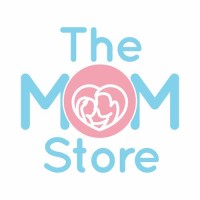Reusable diapering is an ancient parenting practice. Thankfully, this has made a comeback. I remember my grandmother making langots for my younger cousins by stitching old cotton fabrics into multiple folds. When my daughter was born, being an eco-friendly parent, I decided to switch to reusable diapers for obvious reasons. Disposable diapers are made of cellulose, the same material used for making sanitary pads. It does not decompose and fill up the land mass. Reusable diapers are both sustainable and economical. They have many vibrant colours and look awesome.
Reusable diapers are basically cloth diapers that can be reused after washing. They come in two parts, an inner pad and an outer cover. You can either buy them together as a set or separately. Here are the few things to be taken into consideration for getting the correct reusable diapers; otherwise they can get pretty messy.
Fitting
The efficiency of a reusable diaper lies solely on its fitting, otherwise it serves no purpose. Although every diaper brand claims a good fitting, the market is flooded with many cheap reusable diapers which have minimum elastic fitted area. Such diapers will leak at the baby's slightest activity. To ensure that the diaper is fitted well, check for the elastic. The elastic should be covered through the entire thigh areas as well as the waist band. This will seal the thighs and prevent any leakage. Ensure that you choose the right size for the baby; otherwise the elastic may be too tight and leave marks.
Buttons
One prime thing you need to check before buying a reusable diaper is its buttons. It is best if the cover has three buttons in the form of a triangle. This will ensure that the diaper doesn't leak from anywhere, and doesn't open. However, if you don't find a three buttoned enclosure, choose one which has two buttons placed vertically. Here, the top button is for the waist and the bottom one for the thighs. Don't buy diapers which have buttons placed horizontally, they don't provide the correct fitting and tend to open when the baby is playing.
Expiry
Although the claim goes that reusable diapers can be washed and used over and over, many of them actually come with an expiry date. Most of the insert pads last for six to eight months. If you use it beyond that, they begin to release odour. Some pads begin foul smelling even by four months or so. In order to avoid this, choose the inner pads made of natural fibers like bamboo or organic hemp. Also after they are washed and sun dried, give them 24 hours rest before reusing. This way the odour won't be trapped.
Washing
Washing reusable diapers correctly is very important to make them last long. Wash them separately, use an anti- bacterial laundry cleanser that does not have any additives like fragrance or enzymes, or add a little dettol while washing them. Adjust the temperature to 60 degree centigrade in your machine, this ensures no bacteria remains and the diapers are properly sanitized. If you hand wash them, soak them in warm water after washing. Do not use very harsh detergent as it may irritate the baby's skin. Better to use liquid detergent or baby detergent.
Quantity
Each diaper can soak for nearly 2 to 4 hours, depending on the size of the baby. Infants below 6 months urinate more than babies who consume solid. For a newborn, you need roughly 10 diapers each day. Then they have to be washed and dried, so another set of 10 diapers for the next day. So in total you need nearly 20 to 24 diapers. For slightly bigger babies, it will be 12 to 16 diapers.
Price
Reusable diapers can be slightly steep since they can be used over and over. A good reusable diaper will cost you nothing less than Rs. 500. So buying them in bulk can be a hole in the pocket. There are many cheap reusable diapers which have thin plastic lining. Avoid them as they don't have much soaking capacity and the plastic will tear after a few washes.
Inners
Choosing the right pad or insert is very important because that primarily does the entire job. Pads that are very thick take a longer time to dry after washing. And thin ones do not soak for a long time. Choose a pad that is moderately thick, wide and evenly stitched, made of natural fiber and untextured fabric. A textured or synthetic fabric can get boblin which might irritate the skin and cause rashes. Get as many inserts as the number of covers. Many diapers come with one covering and two inserts which isn't much useful. Because every time you change the insert, you need to change the cover as well which soaks some amount of pee and begins to smell. It is better to buy the covers and inserts separately as that can be a bit economical.

Rianka Sarkar is a Bangalore based professor and an author. A plant lover and a bibliophile, she actively blogs on various parenting forums to help out other mothers. Connect with her on https://www.facebook.com/rianka.sarkar.9/ or https://www.instagram.com/sarkarrianka/
Found this article useful? Read more blogs at www.themomstore.in
Disclaimer: The opinions expressed in this post are the personal views of the author. They do not necessarily reflect the views of The Mom Store.



